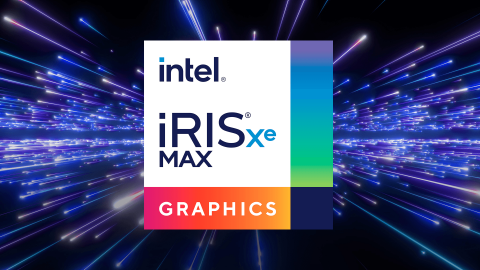The Difference Between Intel Arc Graphics and Intel Iris Xe Graphics
Friday, August 16, 2024The Difference Between Intel Arc Graphics and Intel Iris Xe Graphics
In the ever-evolving world of PC hardware, Intel has made significant strides with its graphics solutions. Two of its prominent offerings are Intel Arc and Intel Iris Xe graphics. While both are based on the Intel Xe microarchitecture, they cater to different segments of the market and offer distinct features. Let’s dive into the key differences between Intel Arc graphics and Intel Iris Xe graphics.
1. Production Background and Technical Specifications
Intel Iris Xe was introduced in 2020, marking Intel’s foray into both integrated and discrete graphics solutions. The Iris Xe lineup includes the integrated graphics found in many Intel processors and the more powerful Iris Xe Max discrete GPU. These GPUs are based on the Xe-LP (Low Power) microarchitecture, designed for efficiency and moderate performance.
Intel Arc, on the other hand, debuted in 2022 as Intel’s dedicated high-performance graphics brand. The Arc series, including models like the A750 and A770, is built on the Xe-HPG (High Performance Gaming) microarchitecture. This architecture is tailored for gaming and professional workloads, offering higher clock speeds, more cores, and advanced features like hardware-accelerated ray tracing.
2. Performance and Capabilities
When it comes to performance, Intel Arc GPUs significantly outshine their Iris Xe counterparts. The Arc series is designed to compete with mid to high-end offerings from Nvidia and AMD, providing robust performance for gaming and content creation. For instance, the Arc A370M offers performance that is substantially higher than the Iris Xe graphics, making it suitable for 1080p gaming at high settings.
In contrast, Iris Xe graphics are more suited for everyday computing tasks, light gaming, and multimedia consumption. They provide a good balance of performance and power efficiency, making them ideal for ultrabooks and mainstream laptops.
3. Target Market and Use Cases
Intel Iris Xe targets the general consumer market, focusing on users who need reliable graphics performance for daily tasks, streaming, and casual gaming. It’s a popular choice for thin and light laptops, offering a good mix of performance and battery life.
Intel Arc, however, is aimed at enthusiasts and professionals who demand higher performance. Whether you’re a gamer looking for smooth gameplay at high resolutions or a content creator needing powerful rendering capabilities, Intel Arc GPUs are designed to meet these needs. They also come with dedicated video memory, which significantly enhances performance in demanding applications.
4. Advanced Features
One of the standout features of Intel Arc GPUs is their support for advanced graphics technologies. This includes hardware-accelerated ray tracing, AI-driven super sampling, and enhanced media encoding capabilities. These features make Arc GPUs a compelling choice for gamers and professionals who require cutting-edge graphics performance.
Iris Xe graphics, while not as feature-rich as Arc, still offer impressive capabilities for their segment. They support modern APIs like DirectX 12 and Vulkan, and provide good performance for integrated graphics solutions.
Conclusion
In summary, while both Intel Arc and Intel Iris Xe graphics are built on the same Xe microarchitecture, they serve different purposes and markets. Intel Iris Xe is perfect for everyday users who need efficient and reliable graphics performance, while Intel Arc is geared towards enthusiasts and professionals seeking high-end performance and advanced features. Understanding these differences can help you choose the right Intel graphics solution for your needs.


